#bagan famous temple
Text
Book a Ride over Bagan – Book Balloon over Began Ballooning in Myanmar
If you're planning a trip to Myanmar, one experience stands above the rest—soaring high in a hot air balloon over the ancient city of Bagan. Famous for its sprawling plains dotted with over 2,000 ancient pagodas and temples, Bagan offers an extraordinary sight from above that few other destinations in the world can match. Whether you're a history buff, an adventurer, or a photographer, a balloon ride over Bagan is an unforgettable way to appreciate the sheer scale and beauty of this UNESCO World Heritage Site.

Why Choose Ballooning Over Bagan?
Ballooning over Bagan is a serene yet thrilling experience. The city, with its temples that date back to the 9th century, offers a bird's-eye view of landscapes steeped in history. From high up in the air, you get a panoramic view of the majestic temples—some of which are partially hidden by trees, others standing in full grandeur. Watching the sun rise over this ancient city, illuminating the spires of temples like Ananda and Shwesandaw with a golden glow, is nothing short of magical.
The cool morning air and the gentle breeze add to the tranquility of the experience. There’s something incredibly peaceful about drifting through the sky, silently witnessing the history and beauty beneath you. The aerial perspective gives you a unique appreciation of the size and layout of Bagan's impressive archaeological site, something that can't be fully captured on foot.
When and How to Book Balloon over Began Myanmar
The ideal time for a balloon ride is between October and March, Myanmar’s dry season. During these months, the skies are typically clear, and the winds are mild—perfect for ballooning. Flights take place in the early morning hours just before sunrise, when the weather is at its calmest and the lighting creates spectacular photo opportunities.
Booking in advance is essential since hot air balloon rides over Bagan are in high demand. There are several reputable companies offering ballooning experiences, including Balloons Over Bagan and Oriental Ballooning, both of which have safety-certified pilots and high-quality equipment. Most companies offer two types of packages: standard rides with a group and premium rides that offer a more private and intimate experience.
A Complete Guide to Enjoy Balloon Over Bagan Ballooning in Myanmar
On the day of your flight, you'll be picked up from your hotel before dawn and driven to the launch site. After a quick safety briefing, you'll be ready to ascend into the skies. The entire experience, from takeoff to landing, lasts about an hour. After your flight, you'll often be treated to a light champagne breakfast to celebrate the occasion. Book attractive tour plans for Balloon over Bagan Ballooning Myanmar at Pro Niti Travel and enjoy pleasurable time.
Summary: Balloon over Bagan Ballooning Myanmar will be full of adventure and keep you busy in exploring the real natural beauty. Find the trusted tour planner at a recognized travel agency to make your trip memorable
0 notes
Text
Tourist places in Myanmar
Myanmar (formerly Burma) is a country rich in history, culture, and natural beauty. Here are some of the top tourist destinations to explore:
Bagan
Bagan Archaeological Zone: Over 2,000 ancient temples and pagodas spread across the plains.
Ananda Temple: One of the most well-preserved and revered temples. https://www.aecglobal.com.au/
Hot Air Balloon Rides: Stunning views of the temple-studded landscape at sunrise or sunset.
Yangon
Shwedagon Pagoda: The most sacred Buddhist pagoda in Myanmar, adorned with gold and jewels.
Sule Pagoda: Historic pagoda in the heart of the city.
Bogyoke Aung San Market: A large market known for antiques, handicrafts, and jewelry.
Colonial Architecture: Explore the colonial-era buildings in downtown Yangon.
Mandalay
Mandalay Hill: Offers panoramic views of the city and surrounding countryside.
Mandalay Palace: The last royal palace of the Burmese monarchy.
Kuthodaw Pagoda: Known as the world's largest book, with 729 marble slabs inscribed with Buddhist teachings.
U Bein Bridge: The longest teakwood bridge in the world, especially beautiful at sunset.
Inle Lake
Floating Gardens: Unique gardens that float on the lake’s surface.
Stilt Villages: Traditional houses built on stilts in the water.
Phaung Daw Oo Pagoda: A major religious site on the lake.
Leg Rowing Fishermen: Fishermen who row their boats using their legs in a unique local technique.
Ngapali Beach
Pristine Beaches: Beautiful, sandy beaches along the Bay of Bengal.
Fishing Villages: Traditional fishing communities where visitors can learn about local life.
Water Sports: Opportunities for snorkeling, diving, and kayaking.
Golden Rock (Kyaiktiyo Pagoda)
Golden Rock: A massive boulder covered in gold leaf, precariously balanced on the edge of a cliff.
Pilgrimage Site: A significant site for Buddhist pilgrims.
Hpa-An
Mount Zwegabin: A popular hiking destination with a monastery at the summit.
Saddan Cave: A large cave with a Buddha statue and a lake inside.
Kawgun Cave: Known for its hundreds of small Buddha images carved into the walls.
Mrauk U
Ancient Temples: Remnants of the Arakanese kingdom with hundreds of temples and pagodas.
Shitthaung Temple: The most famous temple, known for its intricate carvings and tunnels.
Pyin Oo Lwin
Botanical Gardens: Well-maintained gardens with a variety of flora.
Colonial Architecture: Former British hill station with colonial-era buildings.
Anisakan Falls: A beautiful waterfall near the town.
Naypyidaw
Uppatasanti Pagoda: A replica of Yangon’s Shwedagon Pagoda.
Water Fountain Garden: A large park with fountains and gardens.
National Museum: Displays artifacts and exhibits on Myanmar’s history and culture.
Kyaing Tong
Hill Tribe Villages: Visit the villages of various ethnic minorities.
Naung Tong Lake: A scenic lake in the town center.
Traditional Handicrafts: Known for silverware, pottery, and weaving.
Mount Popa
Taung Kalat Monastery: Perched atop a volcanic plug, reached by a staircase with 777 steps.
Spirit Worship: Known as the abode of nats (spirits) and a pilgrimage site.
Myeik Archipelago
Island Hopping: Explore pristine islands with white sandy beaches.
Diving and Snorkeling: Rich marine life and coral reefs.
Moken Villages: Home to the sea gypsies, who live traditionally on the sea.
Myanmar offers a diverse range of experiences, from exploring ancient temples and bustling markets to enjoying serene beaches and vibrant cultural festivals.
0 notes
Text
40 most beautiful places on Earth

Our world is filled with indescribable beauty, both man-made and natural. It is difficult to say whether one life is enough to see all the wonders of earth. But we want to look at 40 most beautiful places around the world that are definitely worth visiting.
1. Bagan, Myanmar
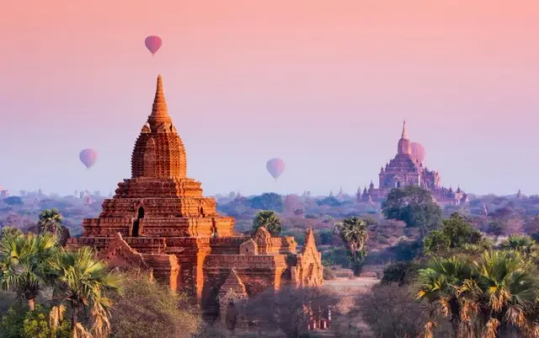
Bagan is the capital of the first state in Myanmar. During its heyday, more than 10 thousand religious buildings were built on the local plains; today, in the abandoned temple complex there are more than 2 thousand ancient Buddhist temples. Ancient pagodas, temples, sacred caves and stupas, located in the bend of the Irrawaddy River, preserve the memory of the former capital of the Burmese Empire. Bagan is an amazing and eclectic sight: the temples are built from limestone, sandstone, marble, with tiles and underground galleries - and each is at least somewhat different from its neighbors.
2. Colored rocks of Zhangye Danxia in Gansu Province, China

Zhangye Danxia Colored Rocks are colorful rock formations in the Geological Park in Gansu Province, China. These formations represent a unique type of petrographic geomorphology and are composed of Cretaceous red sandstones and conglomerates. Today, the Zhangye Danxia Colored Cliffs Scenic Area is popular with travelers from all over the planet, who come here to enjoy scenic walks and boat rides through the area. which are also home to a number of temples.
3. Li River, China
The Li River is one of the most picturesque places in China. National Geographic magazine included the River Lee in its list of ten water wonders of the world. The Li River is often called the “pearl of China”, and residents of the city of Guilin, which is located on the banks of the river, consider it the soul and heart of their city. The river passes through the world's largest and most beautiful karst landscape. The most picturesque part of the river is an 83-kilometer section located between the cities of Guilin and Yangshuo. The landscape is adorned with green hills and steep cliffs that are full of fantastic caves.
4. Monastic complex of Meteora, Greece

Meteora is a famous monastery complex that occupies a vast area near Kalambaka, which is located in northern Greece. What is unique is that the buildings are located on the giant rocks of Thessaly - they are called “meteoros”, which is translated from Greek as “hanging in the air”. The territory has been known as a place of hermitage since the eleventh century - the rich history of centuries attracts pilgrims and travelers from all over the world.
5. Salar de Uyuni - the world's largest salt flat, Bolivia
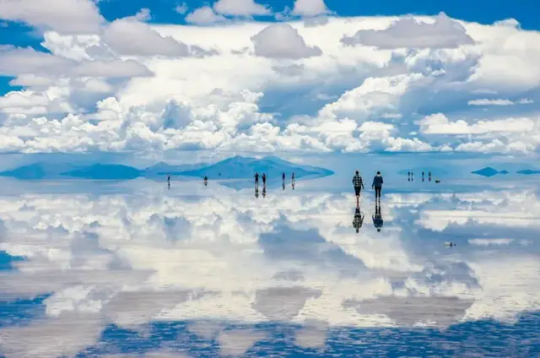
The Salar de Uyuni, or Uyuni Salt Desert, is a dry body of water and the largest salt flat in the world. Once upon a time, the Salar de Uyuni was an integral part of a prehistoric salt lake that occupied much of southwestern Bolivia. After the reservoir dried up, it turned into several small seasonal lakes and salt marshes. The unparalleled beauty and atmosphere of this salt desert makes it one of the most impressive natural attractions in all of South America.
6. Tianji Mountains, China

Everyone has seen landscapes like this in movies like Avatar. Such mountains are typical for the fantasy style, where the action takes place on an unknown, distant planet. But the Tianji Mountains are absolutely real and are located in the Hunan province of China. Huge marble spiers soar hundreds of meters into the air from the base. Visitors can take the cable car to see all these wonders up close.
7. Santorini Island, Greece

Santorini is a magical island located in the Aegean Sea, in the very south of the Cyclades Islands. Santorini is more than 3,500 years old, and traces of ancient civilizations constantly remind us of the rich past of the archipelago. But here the last thing you want to think about is time: relaxation surrounded by volcanic landscapes, amazingly blue seas, well-groomed beaches with colorful sand and postcard houses with snow-white facades is truly serene. People come here to admire the sunsets, enjoy the moment, and regain inner harmony lost in the eternal rush and bustle.
8. Giant Angkor Temple Complex, Cambodia
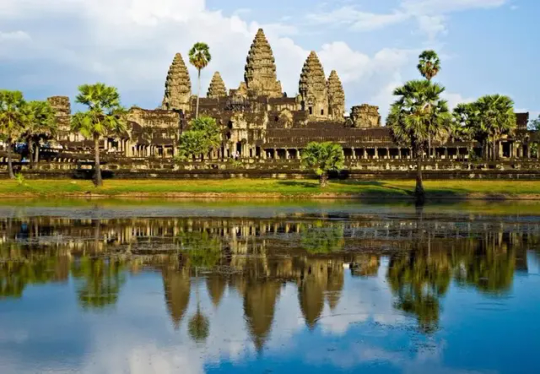
Angkor Wat, dedicated to the Hindu god Vishnu, is the largest religious building in the world. This is a complex three-level structure with many stairs and passages, topped with 5 towers. It is not for nothing that the temple is called the soul of the Khmer people, because Angkor exactly represents Khmer art, a great civilization, the heart of the nation. In total, the territory covers more than 400 sq. km there are about 200 monuments.
9. Yosemite Valley, USA

Yosemite National Park is located on the western slopes of the Sierra Nevada range in California. This ridge stretches across all of California, its height increases from west to east. Yosemite Valley occupies only one percent of the park's total area, but it is where most visitors flock. One of the most popular sites in the world among rock climbers with routes of varying difficulty levels is the granite rock El Capitan, 2307 m above sea level, clearly visible from any part of the valley.
10. Hitachi National Seaside Park, Japan
Hitachi National Park is an amazing example of landscape design. Flower fields stretching beyond the horizon are located on the territory of a former American military base. In the place where armed troops were once based, tulips, poppies, daffodils, forget-me-nots, lilies and sakura are now blooming in lush colors. A feature of the huge park, spread over an area of 120 hectares, is its adherence to the natural seasons: spring, summer, autumn and winter have their own floral covers.
11. Sagano Bamboo Forest in Kyoto, Japan

The Sagano Bamboo Forest is an amazing bamboo grove containing thousands of thin and tall bamboo trees. The forest is one of Japan's most scenic natural attractions, and it is located in the western part of the city of Kyoto in a park called Arashiyama. The forest has become famous not only for its unsurpassed beauty, but also for the unique sounds that arise when wind currents come into contact with thin bamboo stems. Many park visitors come to this place to enjoy the special natural melodies.
12. Ancient city of Petra, Jordan
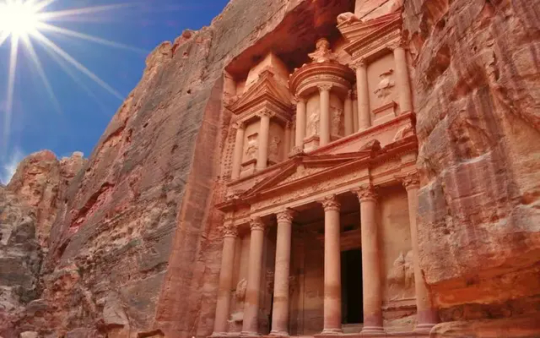
The ancient city of Petra is rightfully considered the main attraction of Jordan, which glorified this eastern country throughout the globe, and one of the 7 new wonders of the world! They say that in the whole world there is nothing like Petra. Carved into the stone walls of the mountains, the pink-red city is full of mysterious charm, as if created to instill a piece of wonder in everyone who dares to visit it.
13. Inca city Machu Picchu, Peru

The walled city of Machu Picchu is one of the most beautiful places on the planet, awarded the title of New Wonder of the World in 2007. Machu Picchu has many honorary titles - it is often called the “city in the sky” or “the city among the clouds”, sometimes – the “lost city of the Incas”. The mysterious city, invisible from below and completely autonomous in the past, is today considered the most important tourist attraction in Peru.
14. Benagil Cave in Algarve, Portugal

The Algarve de Benagil cave is located in Portugal and is one of the most beautiful places not only in this country, but on the entire planet. This natural landmark was formed under the influence of water and wind, forming a natural cavity of incredible beauty. The cave is located next to the popular Benagil beach and can only be accessed from the sea.
15. Ha Long Bay, Vietnam
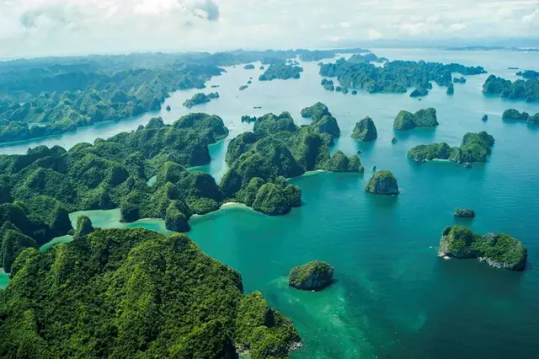
Majestic and mysterious, inspiring and amazing: all words are not enough to describe the beauty of this natural wonder - Ha Long Bay. Try to imagine more than three thousand islets rising from the emerald waters of the Gulf of Tonkin - and your imagination will not be half as beautiful as the views of the bay, which will take your breath away. Halong is a perfect work of art, a priceless collection of unfinished sculptures created by the hands of nature itself.
16. Pamukkale, Türkiye
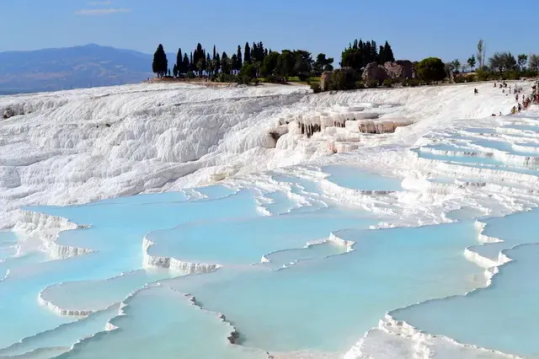
The thermal springs of Pamukkale are an incredible place created by nature itself and attracting millions of people every year. The name translates from Turkish as “cotton castle”. Indeed, when you look at the Pamukkale resort from a distance or in a photo, it seems that you see in front of you a large castle built from many fluffy cotton bolls. This place is also called “Cleopatra’s pool” - according to legend, it was here that the Egyptian queen drew beauty and youth.
17. Rice terraces in Mu Can Chai, Vietnam

The rice terraces in Vietnam are considered one of the wonders of the world, created jointly by nature and man. It seems that the best landscape designers in the world worked on them.
18. Monument Valley, USA
On the border with the state of Arizona and in the southeast of the state of Utah there is one of the national symbols and simply the pride of the United States, a legendary place where hundreds of cowboy advertisements, videos, westerns and other films were filmed - Monument Valley. Since ancient times, the indigenous people of the United States, the Navajo Indian tribes, have lived in the valley in their huts without access to basic running water or electricity. A visit to their settlements is part of the excursion, which will be kindly, but not free, provided to you by the monopolists in this matter - the Indians. They have established themselves as masters of the area and conduct daily tours for the huge number of tourists visiting the park.
19. Perito Moreno Glacier in Patagonia, Argentina

Perito Moreno is the jewel of the Los Glaciares National Park. This pile of huge blue ice floes is located on the border of the Argentine province of Santa Cruz and Chile. This fantastic natural monument in the Argentine part of Patagonia is just one of 48 glaciers fed by the southern part of the glacier located in the Andes. If you're lucky, in Perito Moreno you can see how the huge ice dam of Lake Argentino breaks through, and ice floes accumulate on the opposite shore. This happens from once a year to once every ten years.
20. Hang Son Doong Cave, Vietnam

Son Doong is the largest cave on the planet and the main symbol of the Phong Nha-Kebang National Park, located 500 km south of Hanoi. Despite the honorable status, residents of the surrounding villages learned about the giant cave only in 1991, and the rest of the world in general in 2009, after an expedition of speleologists from the UK. So it is not surprising that its underground passages are still only in the initial stages of exploration.
21. Venice, Italy

You can describe and admire Venice almost endlessly. This is a fabulous city on the water, conveniently spread over more than a hundred islands connected by numerous bridges - a real paradise for romantics. Here you can walk through the narrow streets where the charming Casanova once walked, ride an elegant gondola, and enjoy the bright sunset on the shores of the Venetian Lagoon.
22. Plitvice Lakes - the largest national park in Croatia

The park contains picturesque waterfalls, caves, ponds, lakes and beech and spruce forests, where you can meet roe deer, wildcats and watch rare species of birds. The lakes and waterfalls of the reserve attract tourists from all over the world. Water flows form 16 large karst lakes with water of rich turquoise color, communicating with each other thanks to a cascade arrangement. Foamy waterfalls, lost in forests and thickets, create unique landscapes of the natural park.RESULTS а
23. Lencois Maranhenses National Park, Brazil

Right on the shores of the Atlantic Ocean is located the most beautiful national park in Brazil. Without a doubt, it should be considered one of the most mysterious places on our planet. An area of more than a thousand square meters is occupied by snow-white sand dunes up to 40 meters high, between which small lakes with turquoise water can be seen here and there.
24. Navagio Bay, Greece

Navagio Bay is, without exaggeration, one of the most beautiful and world famous beaches in Greece. This piece of paradise is located on the island of Zakynthos. Navagio is a small bay with white sand, surrounded by steep white cliffs. The beach of the same name is decorated with the rusty wreck of a smuggler's ship. The stranded ship "Panagiotis", which appeared here in 1980, can be explored. You can only get to the bay by excursion boat: the passage from land has an incredibly steep descent.
25. Provence, France

Among the postcard landscapes of the French countryside, there are hardly any more replicated than lavender fields. The main “lavender” department of France, picturesque Provence, boasts hundreds of square kilometers of these fantastic alien landscapes, and in July-August there is a real pilgrimage of admiring tourists.
26. Victoria Falls on the Zambezi River, border of Zambia and Zimbabwe

Majestic beauty and power, a roar that never stops for a second, a million splashes forming a cloud of steam and fog, a feeling of danger when you stand on the edge, and above all this grandeur a dazzling rainbow - this is exactly the picture you can see at Victoria Falls, one of the largest waterfalls of the world. It is possible to view the waterfall from several points.
Read the full article
1 note
·
View note
Text
Bagan Draws Nearly 2 Million in 10 Months
Bagan, a UNESCO World Heritage Site in Myanmar, attracted nearly 2 million tourists in 10 months of 2023, showcasing its growing global appeal and vital role in the local economy.
via Xinhua, 21 November 2023: Bagan, Myanmar’s renowned archaeological zone, has experienced a significant surge in tourism, with nearly 2 million visitors, including over 11,000 international tourists, in the first 10 months of 2023. This marks a notable increase from the approximately 1 million visitors recorded in 2022. Famous for its thousands of ancient Buddhist pagodas, temples, and…

View On WordPress
0 notes
Text







Ancient Ruins As They Would Have Looked In Their Prime
Duncan Madden
I write topical, environmental and experiential travel stories.
From the unmatched wonder of Cambodia’s Angkor Wat to the sprawling majesty of the temples of Bagan in Myanmar (aka Burma). From Egypt’s Great Sphinx of Giza to the extraordinary carved city of Petra in Jordan. These remnants of the ancient world have long cast a spell over travelers from every corner of the globe.
In fact, a quick check of any ‘most popular tourist attractions in the world’ list (note attractions, not cities) will likely throw up more ancient man-made sites than modern attractions or natural wonders, with Machu Picchu, the Great Wall of China, the Acropolis and Rome’s Colosseum regular contenders for the top spot.
People’s interest is clear. We’ve long been fascinated by our past as and how it shapes our future – how people lived, what technologies they had, what their homes and public spaces looked like and just how they built these extraordinary edifices without modern machinery.
But it’s often tough to really get a sense of what these ancient buildings would have looked like in their heyday - many were resplendent in gold and other finery, intricately carved and finished with elements no modern tourist can ever see and would struggle to imagine.
Now though, with a little creativity and some help from the technical, historical and architectural experts at Expedia, we can see what seven of the great ancient ruins of the world would have looked like to those who lived with them at their peak. Enjoy.
The Parthenon -The Parthenon, then and now.
Casting views from the hilltop at the Acropolis citadel in Athens, Greece, the Parthenon is a true ancient wonder whose Doric architecture has been ravaged by time and war. Its cavernous halls once held a huge golden statue of Athena, the Greek goddess of wisdom, craft and (ironically) war.
Nohoch Mul Pyramid, Cobá - Original colors and details shine a new light on Nohoch Mul.
The Mayans built some amazing stuff before the Spanish conquistadors spoiled the party, with pyramids to rival those of Egypt. Cobá, set deep and remote in the Mexican state of Quintana Roo, was settled some time between 100 BC and 100 AD and occupied right up until 1550. Amid the thick jungle, extraordinary caves and natural pools are dotted many temples, with Nohoch Mul the tallest at 137 feet. Rediscovered in the 1800s and only accessible to the public since 1973, it remains one of the most extraordinary insights into the tenacity of ancient humans to leave their mark anywhere in the world.
Temple of Jupiter - From a few broken columns to its original splendor, the Temple of Jupiter.
As its name suggests, this temple was built in honour of Jupiter, the Roman god of sky and thunder, on the Bay of Naples in a thriving city called Pompeii. Modern man may think they didn’t do a good enough job though, as it was buried beneath the wrath of nearby Mount Vesuvius in 79AD in what remains the most famous volcanic eruption in history. Rediscovered in the 16th century, it took many years of excavation to uncover its limited remains.
Milecastle 39, Hadrian’s Wall - Little more than foundations now, Milecastle 39 was once a Roman stronghold.
Britain’s lesser known ‘great wall’ was a monumental Roman achievement - 73 miles of border cut through the English countryside dating back to the first century AD. Built (we think) to secure Roman Emperor Hadrian’s grip on the island nation and its pesky inhabitants, it had forts known as Milecastles built at each Roman mile along its length. All but gone now, this gives us a glimpse into how they would have looked.
Luxor Temple - The famed Luxor Temple returning to its original glory.
One of the most recognisable names connected to ancient architecture, Luxor takes its name from the Arabic for fortification – al-Uqsur – and has been a sacred site since its commission in 1380BC by Amenhotep III. It was renovated and updated a century later by Rameses II who added a great pylon gateway and courtyard, connected to the nearby Karnak Temple by an avenue of sphinxes to guard it. An iconic structure in a country filled with them.
The Pyramid of the Sun, Teotihuacán - This virtual renovation shows the true scale of the original Pyramid of the Sun.
A genuine modern day mystery, we know Teotihuacán was one of Mexico’s first urban centres sometime between the first and seventh centuries CE but we don’t know much about who built it or who lived there. Of its many extraordinary and mysterious structures, The Pyramid of the Sun is by far the largest – an ancient, man-made mountain.
Temple B, Area Sacra di Largo Argentina - Temple B – more impressive than its name suggests.
Built in Italy not Argentina as the name may suggest, this gorgeous central Roman square once housed four exquisite temples. The most recently discovered (and least romantically named) Temple B was found in the 1920s and still has six columns and the original steps and altar intact. Perhaps most famous as the place where Julius Caesar uttered his immortal accusation, ‘Et tu, Bruté?’, as he was stabbed to death, it’s one of the lesser known but more remarkable sites from the Roman civilization, and isn’t often open to visitors.
see what seven of the great ancient ruins of the world would have looked like to those who lived with them at their peak. Enjoy.
10 notes
·
View notes
Text
The World Is Amazing, Actually Pt6
Today’s Wild Place (The Earth is An Alien Planet):
Hang Sơn Đoòng, Vietnam (the world’s largest natural cavern, so big it has an actual rainforest inside it)



Today’s Incredible Feat of Engineering (look! at what! we made!):
Bagan, the Ancient City of Temples (Myanmar)
LOOK AT THIS:

Is it a landscape from Star Wars?

A Fantasy kingdom from a world that never was?

No! It’s real and it exists on this planet at this exact moment!
Today’s Cool Life Form (the rare, the weird, the beautiful):
The Okapi, aka The Zebra Giraffe, aka Seriously, Dude, Pick A Theme And Stick With It


(Do these stripes make my butt look fabulous? Of course they do.)
Today’s Bizarre Mystery (no, seriously, wtf?):
Movile Cave, Romania (a cave that has been sealed for 5 million years and has developed a completely alien environment, complete with creatures that exist absolutely nowhere else on earth, breathe toxic air (when they breathe at all), and have never ever once seen sunlight.

(No, I’m not posting images of the creatures, because they are all pallid little monsters with way too many legs.)
Today’s Act of Humanity (yes, we are worth the effort):
The Guerrilla Grafters are an organization that quietly (and technically illegally) grafts the branches of food-bearing trees to urban non-food-bearing trees, because they “aim to prove that a culture of care can be cultivated from the ground up. We aim to turn city streets into food forests, and unravel capitalist civilization one branch at a time.”

(Image taken of a branch from one of the famous Trees of 40 Fruits, a single tree with 40 types of fruit tree branches grafted to it...which is a bonus Act of Humanity, because an art professor created this tree specifically to show that food could be grown locally no matter what it was, and then he planted 16 of them across the USA just to hammer it home.)
< Previous || Next >
(Addendum 1 || Addendum 2)
#planet earth#people are okay#hang son doong#bagan#okapi#movile cave#tree grafting#guerrilla grafters
97 notes
·
View notes
Photo

Mounted on a simple lotus base, this standing Buddha is in the classic style portraying the Buddha's facial features and robes that developed during the late eighteenth century. This continues to be the prevalent mode of representation today. Unlike earlier images, such standing figures were not always carved from a single block of wood. The hands and/or flared sides of the lower robe were often carved separately and later dovetailed with joints filled in and lacquered over. The torso of the Buddha is completely enveloped in an elaborately draped cape like outer robe (uttarasanga) that terminates around the hemlines in cascades of flaring overlapping folds finished with bands of raised lacquer scrolling. The shoulder cloth (sanghati) is similarly decorated. Monks in Myanmar wear their robes in this way when going outside the monastery on the morning alms rounds and to other events. The hands are in a variant of the varada mudra – a gesture of benevolence. The right hand of the statue holds the myrobalan fruit (terminalia chebula), suggestive of the physical and spiritual healing powers of the Buddha.
NOTE: This is a replica of the famous Konagamana Buddha at Ananda Temple in Pagan (Bagan), Myanmar.
This wood sculpture is a one of a kind statue, hand carved by the very talented artists of the beautiful country of Myanmar (Burma). Every piece is truly unique!
#buddha#buddhism#buddhist#Buddhist art#Golden Buddha#teakwoodbuddha#teakbuddha#lotusflower#buddhistlotus#buddhistlotusflower#standing buddha#Standing Buddha Statue#classicbuddha#laquer#siddarthagautama#gautama buddha#sanghati#myanmar art#myanmarbuddha#buddhistartofmyanmar#burmabuddha#burmese art#burmesebuddhastatue#burmesebuddha#varadamudra#myrobalan#healingbuddha#konagamana#anandatemple#dharmasculpture
7 notes
·
View notes
Text
Ghost Adventures Checks into the Cecil Hotel: Zak Bagans on Investigating the Crime Landmark
https://ift.tt/eA8V8J
In Stephen King’s novel The Shining, the Overlook Hotel is an expansive structure with a dark past, located in the remote Rocky Mountains. Despite its opulent beginnings, the hotel becomes a place where brutal murders occur, madness sets in, ghosts lurk, and evil itself is a permanent occupant.
Relocate King’s Overlook to Downtown Los Angeles’ Skid Row, and you have its closest real-world equivalent: the Cecil Hotel. The hotel’s checkered history, and lore involving curses and ghosts, has made it a dark tourism landmark situated at the crossroads of true crime and paranormal fascination. But despite lots of interest on the internet, the Cecil, since rebranded as Stay on Main Hotel, has never officially permitted cameras inside for a paranormal investigation.
Until now. Enter Zak Bagans.
(Disclaimer: I have previously worked with Zak Bagans on television shows, and currently appear as an expert on the Travel Channel series Paranormal Caught on Camera.)
Executive producer and star of Ghost Adventures, the long-running paranormal reality series on Travel Channel, Bagans leads his team of investigators on an exploration of a location he calls “spectacularly frightening” in Ghost Adventures: Cecil Hotel, a two-hour special streaming exclusively on the new Discovery+ service.
For fans of the ghost-TV genre, Ghost Adventures: Cecil Hotel boasts evidence of scratches, disembodied voices, light anomalies, a faucet seemingly turned on by an invisible force, and more. But regardless of one’s personal beliefs about the unexplained, the special lives up to its hype of a “first time ever” examination of the infamous hotel.
Bagans tells Den of Geek the special is also a culmination of a decade-long pursuit that began “before Elisa even died.”
The “Elisa” that Bagans refers to is Elisa Lam, a 21-year-old Canadian student with a kind, sarcastic sense of humor who loved fashion and Harry Potter; she frequently blogged observations about guys she liked, figuring out a place in the world, as well as her own insecurities and mental health struggles. Lam was a daughter and sister, and a real person on a journey of self-discovery before her life ended too soon, and she made the Cecil internet famous.
While on a solo trip to California in 2013, she went missing and died while staying at the hotel. An elevator surveillance video showed the young woman acting erratically as she pushed buttons, paced in and out of the elevator, and even appeared to be hiding from someone. Her body was discovered in a rooftop water tank weeks after she disappeared. Despite her death being ruled accidental, with her bipolar disorder deemed a contributing factor, questions remained as to how Lam could have gained access to the roof or closed the lid to the tank from within.
But before that two-and-half minute viral video made Lam a popular topic for podcasts — and before American Horror Story: Hotel drew inspiration from the landmark’s past — the Cecil’s reputation was more tied to tragedy than travel despite its beginnings in 1924 as an LA destination, complete with a grandiose lobby.
Multiple suicides took place at the Cecil as well as infanticide and the unsolved murder of Goldie Osgood in 1964. Elizabeth Short, aka the Black Dahlia, was reportedly seen in the hotel bar in the days leading up to her murder in 1947, and two serial killers are known to have stayed there – including Richard Ramirez, who committed a murder spree in the 1980s, and the investigation of whom is the focus of the Netflix documentary series Night Stalker: The Hunt for a Serial Killer.
“I knew the history of Richard Ramirez there, and the deaths, and knew it was a big creepy building,” Bagans says.
Although prior attempts to gain permission to film there had been rejected, he thinks maybe the COVID-19 pandemic and ensuing shutdowns convinced the hotel’s owners to allow it because of the location fee paid by production. “Or maybe they had things happening to themselves and had enough of it,” Bagans says.
Either way, Cecil fits neatly into Bagans’ pursuits, and it comes as no surprise that the hotel has long been on his bucket list. He has a fascination with the darker sides of this world — as well as the next. When not investigating the paranormal on television, he collects and exhibits haunted dolls and possessed possessions, along with “murderabilia” from serial killers, such as drawings by Ramirez.
“I collect his things. I have his death row TV, his sketches, his clothing,” says Bagans before adding, “I study these people.” Bagans says he even visited the Concordia cemetery in El Paso, Texas, where Ramirez “got started” and was said to practice satanic rituals.
As a result, Bagans believes that Ramirez was engaged in a “top-tier possession” with the horrors he was committing ultimately in the devil’s name. Bagans doesn’t give a pass to the murderer but does theorize that the serial killer was generating more negative energy and entities at the hotel.
Saying he believes the Cecil is “saturated with dark energies,” he thinks Ramirez’s satanic rituals added an evil residue to the building. Interestingly, however, Bagans also thinks there’s something supernatural about the grounds upon which the building stands.
Though he references The Shining, he says he also thinks of the Cecil like the vampire-infested strip club in From Dusk Till Dawn. In the final shot of the film, it’s revealed the club sits atop an Aztec temple. Bagans equates the hotel to this, saying it’s part of some ancient “machine.”
“I’ve been to a lot of places throughout the world, but when you walk through the doors of the Cecil Hotel, you know there are other doorways to other worlds,” he says. “If we were to see deeper dimensionally, you would see all these other doors and rooms, and I believe it goes way down into the earth and draws a lot of energy through the earth. It is then magnified by the dark energy and criminal activity of Skid Row, and amplified by the rituals [serial killer] Jack Unterweger and Richard Ramirez did.”
For the Discovery+ special, Bagans says he wanted to be delicate when discussing the circumstances of Lam’s death. He references the hotel’s history of suicide, and murder attributed to temporary insanity, and believes malevolent energies fed off her mental illness and influenced her.
It is admittedly a problematic theory for skeptics and non-believers of the paranormal, but Bagans — like many with lingering questions about Lam’s strange death — looks to her past behavior as telling. Lam had previously disappeared and required treatment but wasn’t known to have suicidal ideations. There were no unusual drugs detected in her system and the initial cause of death was deemed inconclusive.
“It didn’t make sense she was having a manic episode,” he says. “From my research, no one was able to say she had had a manic episode this bad before. If she was having an episode and acting that bad, how could she have taken such a calculated journey to end up in that water tank under that manic sense?”
While Bagans strives not to diminish Lam’s death, he says, “that building has the power to mess with your mind.” During the investigation he says teammate Aaron Goodwin was overcome with feelings of rage, and that his interviewees, including a crime scene photographer, were so disturbed they often needed to leave the hotel.
“You don’t know what you’re feeling there. There’s too many spirits, too much energy.”
Indeed, during the course of the special, the Ghost Adventures crew believe they encounter several spirits, including those of Lam, Ramirez, Osgood, and more.
For Bagans, investigating Cecil, or even conducting interviews about it, only serves to charge the battery of this machine. But, quoting his favorite film, 1992’s Bram Stoker’s Dracula, he says, “there is much to be learned from beasts.” Bagans is seeking to understand the unknown despite the risks.
Whether or not viewers of Ghost Adventures: Cecil Hotel choose to share his paranormal theories about the building — or simply view it as a strange nexus of true crime — Bagans says there is no denying its inescapable reputation.
cnx.cmd.push(function() { cnx({ playerId: "106e33c0-3911-473c-b599-b1426db57530", }).render("0270c398a82f44f49c23c16122516796"); });
“You can renovate it, change the name, or paint it a different color, but you’re never going to erase the darkness of the Cecil Hotel.”
Ghost Adventures: Cecil Hotel is available to stream on Discovery+.
Subscribe to Den of Geek magazine for FREE right here!
(function() { var qs,js,q,s,d=document, gi=d.getElementById, ce=d.createElement, gt=d.getElementsByTagName, id="typef_orm", b="https://embed.typeform.com/"; if(!gi.call(d,id)) { js=ce.call(d,"script"); js.id=id; js.src=b+"embed.js"; q=gt.call(d,"script")[0]; q.parentNode.insertBefore(js,q) } })()
The post Ghost Adventures Checks into the Cecil Hotel: Zak Bagans on Investigating the Crime Landmark appeared first on Den of Geek.
from Den of Geek https://ift.tt/2KEBW7b
1 note
·
View note
Link
Kakku Pagoda offers a unique alternative to the plentiful temples spread throughout Southeast Asia. Visiting this extraordinary site takes time and effort.
While most of Kakku’s stupas were built in the 17th and 18th centuries, the largest is believed to have been built in the 12th century during the reign of Alaungsithu, King of Bagan, as part of expanding religious sites across his empire. Since then, two main architectural designs have created a distinct forest of 2,478 needle stick pagodas that reach out to take the shape of Buddha’s footprint.
From the main stupa, where wisps of omnipresent incense smoke perfume the musty air, visitors can walk through the small channels within rows of smaller stupas, each breathtaking in their nuanced designs, many featuring stucco reliefs in differing forms of veneration. While renovation is ongoing, plenty of the stupas suffer from varying degrees of weathering and damage from the odd earthquake that blights many temple complexes within Myanmar.
Due to its remoteness and location within Shan State, visitors are few, although the authorities have created a reflecting pool for photographic delights. Thankfully, unlike at other more famous temples, there isn’t the need to wait for hours to get that cover shot.
18 notes
·
View notes
Text
Exploring Myanmar: Top Tourist Destinations You Must Visit
Myanmar, with its rich history, vibrant culture, and stunning landscapes, is an emerging gem in Southeast Asia's travel scene. This enchanting country, formerly known as Burma, offers a plethora of unique experiences that cater to history buffs, nature enthusiasts, and cultural explorers alike. If you're considering a trip to Myanmar, here’s a guide to some of the most captivating tourist destinations in Myanmar that should be on your itinerary.
1. Bagan: The Land of Temples
Bagan is one of Myanmar’s most iconic destinations, renowned for its breathtaking collection of ancient temples and pagodas. This archaeological marvel boasts over 2,000 temples and stupas scattered across a vast plain, creating a mesmerizing landscape that is best explored by sunrise hot air balloon rides or serene bike rides through the plains.
Highlights: Shwedagon Pagoda, Ananda Temple, Dhammayangyi Temple
Must-Do: Witness the sunrise over Bagan’s temples from a hot air balloon for an unforgettable view.
2. Yangon: The Cultural and Economic Hub
As Myanmar’s largest city, Yangon offers a fascinating blend of colonial architecture, vibrant street life, and significant religious sites. The city’s crown jewel is the Shwedagon Pagoda, a golden stupa that is a pilgrimage site for Buddhists and a symbol of Myanmar’s spiritual heritage.
Highlights: Shwedagon Pagoda, Sule Pagoda, Bogyoke Aung San Market
Must-Do: Explore the bustling markets and taste traditional Burmese cuisine.
3. Mandalay: The Heart of Burmese Culture
Mandalay, Myanmar’s second-largest city, is a treasure trove of cultural and historical landmarks. It’s the cultural capital of Myanmar and offers a wealth of attractions, from ancient royal palaces to beautiful monasteries.
Highlights: Mandalay Hill, Kuthodaw Pagoda, U Bein Bridge
Must-Do: Visit the U Bein Bridge at sunset to experience the tranquil beauty of this iconic structure.
4. Inle Lake: A Tranquil Escape
Nestled in the Shan Hills, Inle Lake is famous for its stunning natural scenery and unique floating gardens. The lake is home to the Intha people, who live on stilt houses and navigate the waters using traditional one-leg rowing techniques.
Highlights: Floating Gardens, Phaung Daw Oo Pagoda, Inle Lake Boat Tours
Must-Do: Take a boat tour around the lake and witness the traditional lifestyles of the Intha people.
5. Ngapali Beach: Myanmar’s Tropical Paradise
For those seeking a tropical getaway, Ngapali Beach offers pristine white sands, clear turquoise waters, and a tranquil atmosphere. It’s the perfect destination for relaxation and enjoying a range of water activities, including snorkeling and swimming.
Highlights: Ngapali Beach, Pearl Farm Tours, Local Seafood Restaurants
Must-Do: Spend a day lounging on the beach and savoring fresh seafood by the shore.
6. Bago: Historical and Spiritual Significance
Bago, located just a short drive from Yangon, is home to some of Myanmar’s most impressive historical and spiritual sites. The city is known for its massive reclining Buddha and ancient pagodas that reflect the rich history and religious significance of the region.
Highlights: Shwemawdaw Pagoda, Kyaikpun Pagoda, Reclining Buddha
Must-Do: Explore the ancient pagodas and experience the local Buddhist culture.
7. Hsipaw: A Hidden Gem in the North
For adventurous travelers, Hsipaw offers a glimpse into the rural life of Myanmar. Located in the northern part of the country, this small town is surrounded by scenic landscapes, including rolling hills and traditional Shan villages.
Highlights: Local Trekking Trails, Shan Villages, Hsipaw’s Old Market
Must-Do: Trek through the surrounding hills and interact with local villagers for an authentic experience.
8. Pyin Oo Lwin: The Summer Retreat
Known for its cool climate and colonial architecture, Pyin Oo Lwin (formerly Maymyo) was a summer retreat for British colonialists. The town is surrounded by botanical gardens and offers a refreshing escape from the heat of the lowlands.
Highlights: National Kandawgyi Gardens, Pyin Oo Lwin’s Botanical Gardens, Colonial Architecture
Must-Do: Stroll through the botanical gardens and enjoy the cooler climate.
Planning Your Trip
For a well-curated travel experience in Myanmar, Pro Niti Travel offers expert guidance and personalized itineraries. They can help you explore these destinations and ensure you get the most out of your visit to this captivating country.
Conclusion
Myanmar is a destination of immense beauty and cultural depth, offering travelers a chance to explore ancient wonders, serene landscapes, and vibrant city life. Whether you’re marveling at the temples of Bagan, relaxing on the shores of Ngapali Beach, or delving into the rich history of Mandalay, Myanmar promises an unforgettable journey. Pack your bags and prepare to be enchanted by one of Southeast Asia’s most intriguing countries.
For more information and to start planning your Myanmar adventure, visit Pro Niti Travel and embark on a journey to discover the wonders of Myanmar.
0 notes
Text
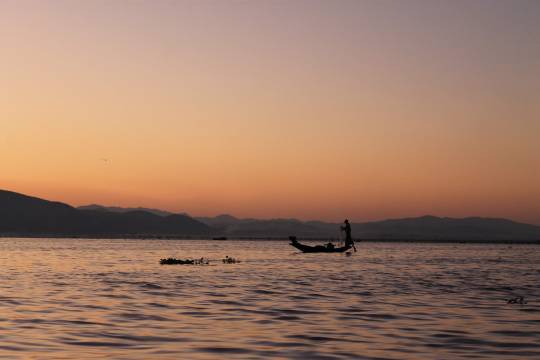
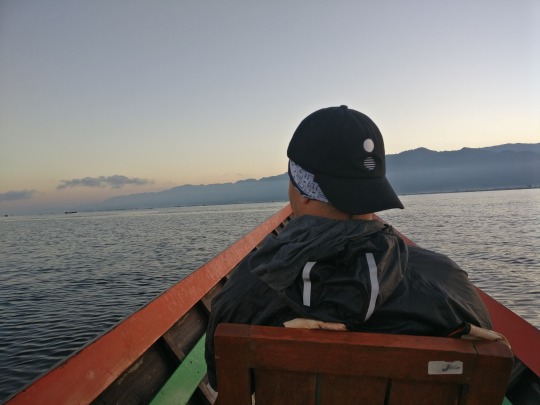
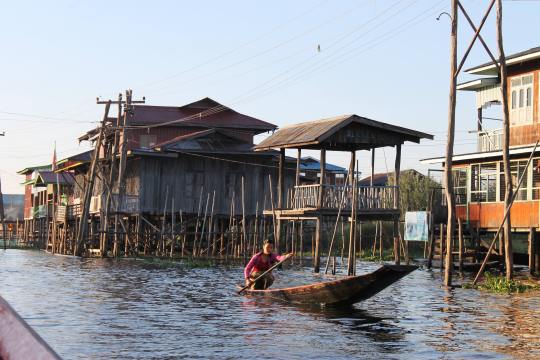

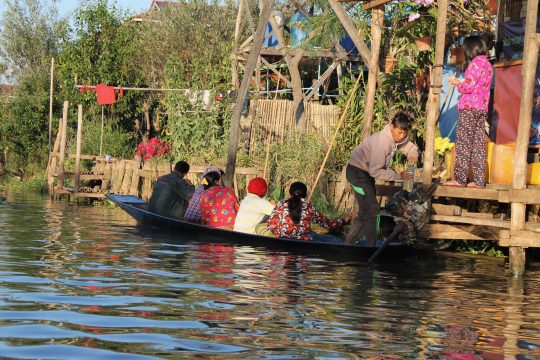

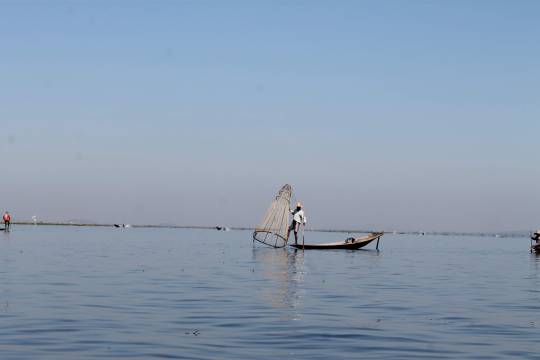
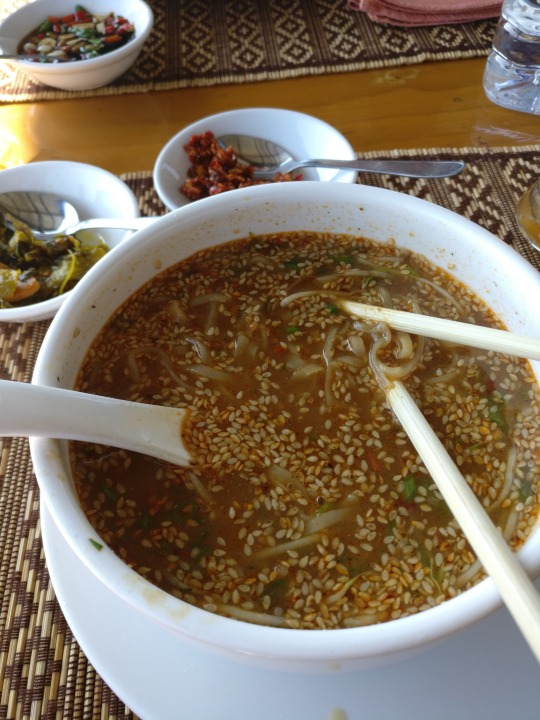
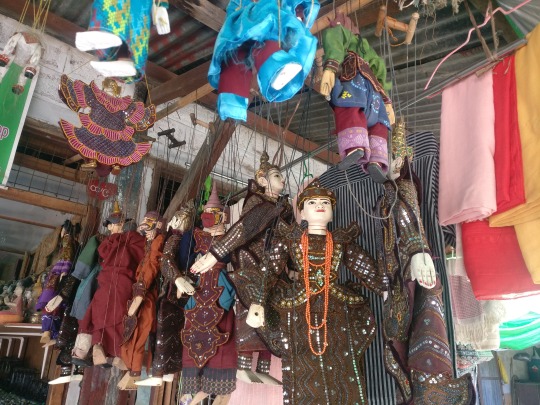
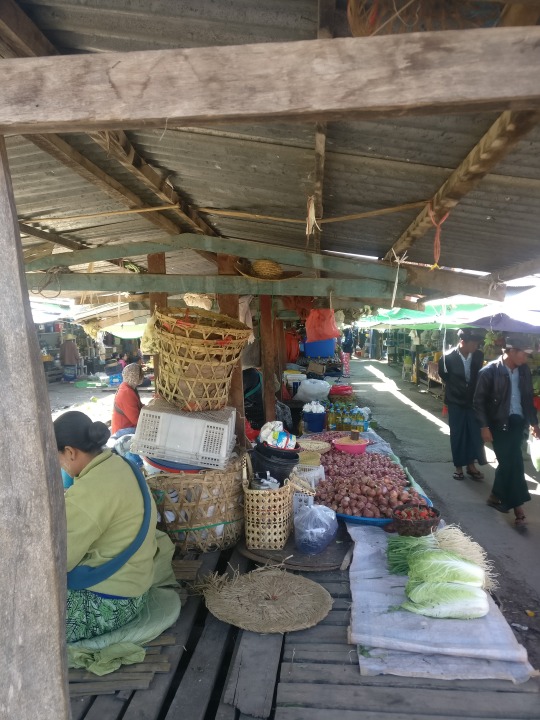
Myanmar
📍Yangon
From the taxi ride from the airport to our hostel room, we immediately noticed the traffic here is even worse than in Bangkok: cars straddling lanes, honking nonstop, pedestrians having no right-of-way despite walking signals, etc.
So when we walked around, we tried our very best not to get angry at cars and instead valued our lives by waiting as long as needed before crossing a road.
We also immediately noticed the strong presence of areca nut. This nut is wrapped in betel leaf and people keep it in their cheeks while sucking/spitting the juice, which apparently provides a stimulant response. It also results in red stains EVERYWHERE and people spitting this stuff CONSTANTLY. Seriously, roads and sidewalks are red and people are nonstop hacking/spitting inches from our feet.
That being said, most people here are so so so nice. Apart from the cultural differences in personal space/hygeine, we've been smiled and waved at nonstop (almost every time there's a child) and the tiny babies and children make me smile instantly no matter what the other circumstances are. They're so friggin CUTE!!!!! We tried to take the circle train and we were approached by an extremely friendly man (named Ham? who spoke to us about Justin Bieber and Trudeau and taught us simple Burmese phrases). An hour or so into the train ride, we realized we'd been led astray and were on a train straight away/straight back. It was still cool to see the culture and the landscape, but we were hungry and exhausted by the end of the 4.5 hour excursion. We also saw the famous Pagoda Shwedagon at night and it was beautiful -- I definitely prefer seeing temples at night. The next day we explored an abandoned amusement park, which was apparently built in 1997 by the Burmese dictatorship to distract people from the political/military turmoil going on. It closed down in 2013 and was quickly reclaimed by the forest, giving it an eerie but very cool feel. There are people squatting in the old shops because they had nowhere else to go when they lost their jobs after the park was suddenly closed.
After 2 nights in Yangon, We then took a night bus to Inle Lake, which is where we are right now.
📍Inle Lake
We decided to get up bright and early (5 am) to take a boat tour of the lake and see the sunrise. We knew it would be chilly, so we wore as many layers as possible, but our feet were completely numb by the time the sun came up. "I thought we were coming to Southeast Asia to get AWAY from the cold!!!" and "WHY did you tell me not to pack my hoodie!!?" are things I have to keep hearing from a grumpy Mathew. I think the view was absolutely worth the chilly experience. I'm really happy we decided not to skip Inle Lake after reading reviews of it being too touristy. It's so serene here and a nice break between hectic cities. It's also so interesting seeing the way these people live -- every single building is on stilts and they have to use a boat to get to another house/shop. We saw families load up on these tiny boats and maneuver around so easily and balanced, whereas Mat and I were nervous of tipping our boat with only us 2 and our guide...
We've been using the bikes provided to us from our hostel to explore a little bit and today we're going to a winery (random, I know) before taking another night bus to our next stop: Bagan!!
1 note
·
View note
Text
10 in myanmar (burma)
https://myanmartours.com/myanmar-tours/adventures.htmlWelcoming the dawn in Bagan, visiting Shwedagon Pagoda in Yangon, watching fishermen in Inle Lake, sunbathing on Ngapali beach ... are the experiences travelers should try when coming to Myanmar.
Bagan: Speaking of Myanmar, visitors will probably think of Bagan, the capital of the first dynasty, built by King Anawrahta in 1044. Bagan has more than 2,000 temples and stupas spread over an area of 42 km2. on the east bank of the river
Ayeyarwaddy. These constructions were built from the 9th to the 13th centuries with sophisticated sculptural details, expressing the typical culture of Myanmar people.
Yangon: Myanmar's largest city is quite modern, but retains its classic and traditional features. Here, visitors should visit Bogyoke Aung San Market, Shwedagon Pagoda, and enjoy sidewalk cuisine. Yangon is the gateway of Myanmar, with direct flights to major cities of Asia.
Mandalay: This is the last capital of Myanmar, located 700 km north of Yangon, between the Ayeyarwaddy River and Shan Plateau. Mandalay is considered the cultural center of Burma people, a city of craftsmen and also a bustling trade point. In addition to the royal palace and religious buildings, visitors can go to Amarapura, Mingun, Inwa and Sagaing from Mandalay.
Inle Lake: Located at an altitude of 880 m, this shallow lake has an ecosystem and a unique residential community. The image of traditional fishing fishermen has become famous all over the world. The best time to come here is in September and October, when the Hpaung Daw U and Thadingyug festivals are held.
Popa Mountain and Taung Kalat Monastery: Located near Bagan in central Myanmar, Popa is an extinct volcano with a height of over 1,500 meters above sea level. Besides, Taung Kalat monastery located on a lava spray mouth also attracted many visitors. Guests will walk barefoot over 700 stairs to admire the temple and monastery. See More...
YANGON - MYANMAR
6th Floor, 158 Building, 45 Street,
Botataung Township, Yangon
T: +95 944 312 1788 / +951 201026
Website : https://myanmartours.com/
7 notes
·
View notes
Text
Heaven on earth
Summary: Aang and Katara discover the beauty of an old pagoda in the Earth Kingdom, located in a sacred place for the air nomads.
Word count: 2,375
Author's note: This is 1/2 of the prompts that I submitted this year and which eventually got chosen (the other one didn't, again)! I wanted to submit this specific prompt because I already had an idea for it last year when someone first submitted it under the name "Sacred (Place)", but it didn't make the final cut. Now I can finally share what I had in mind and why I wanted to write it.
The idea came to me when I watched the 4th episode of "Kaks Kanget Kagu-Aasias" ("The two tough ones in South-Eastern Asia"), which was an Estonian TV series running in spring 2017. The two tough ones, Kristjan Jõekalda and Teet Margna, are our own local, famous, very rich, funny and beloved Estonian TV hosts/entertainers. They've travelled through South-America (Ecuador, Peru, Argentina, Chile), Russia, India, the United States of America and their last journey took them across 4 countries in South-Eastern Asia, one of them being Myanmar.
In Myanmar, they visited Bagan and introduced the Shwesandaw Pagoda, where Teet (being the braver one in the bunch) climbed to the top floor to have the most marvellous view of the sun setting. That breathtaking view and the entire landscape filled with so many beautiful temples was what inspired me to write this story with Aang and Katara. I could just imagine them exploring a similar place in their world. Set postwar, prior to "The Promise" trilogy.
----------x----------
"You sure you don't wanna come with us?" Aang asked for the nth time that evening. He was holding onto Katara's hand to help her climb up on Appa's saddle.
"Nah, it's just some old ruins. You guys go and have fun. It'll give me a break from your constant oogies," Sokka said as he dumped the pile of firewood in front of him, with Momo leaping closer to sniff whether he'd brought something edible along with him, too.
"Ugh.." Katara merely groaned and rolled her eyes as she hopped to the front of the saddle. Aang airbended himself on Appa's head and grabbed the reins.
"Okay. See you later, Sokka!" he exclaimed cheerfully, waving to both him and his pet winged lemur, who stayed behind to keep the warrior company.
"Appa, yip-yip!"
The sky bison growled and took off from their campsite. The main trio of Team Avatar were camping near the Northern Earth Kingdom while helping the Fire Nation colonials move back to their homeland. After another small village had been cleared of the Fire Nation families, they had the rest of the day off.
"So, where is this place exactly?" Katara wondered as she leaned over the edge of the saddle, crossing her arms and supporting her chin on top.
"About a mile away from our camp. If we walked, it'd take us about an hour to get there. But thanks to Appa, we'll be there in a few minutes!" Aang stated in a chipper tone, glancing over his shoulder to grin at her. He scratched the sky bison's head to thank him for providing them with such a short, cosy ride to their destination. Appa released a long, low growl at the show of affection.
Katara looked down below. They were flying over a territory full of thick fir forests, the evening sun that still shined behind them casting shadows over the tall trees and the ground beneath. Soon she could spot a couple of foliage trees in between, the density in general slowly becoming more scarce.
"Look, there it is!" Aang shouted excitedly, pointing a finger straight towards the horizon. When they got closer and Katara lifted her head to look in front, she gasped at the sight.
"Wow!"
She saw hundreds of pyramid-shaped buildings spread across the vast landscape. Gravel roads wreathed with bushes and trees connected them to each other. Plots of neglected farmland filled the empty square spaces in between.
"There's so many of them..."
Katara crawled to the side of the saddle and peeked over the edge. She was amazed by this place to say the least. Aang tugged at the reins a little bit to let Appa fly in a more relaxed manner so they could enjoy the view.
"These are all temples, stupas, pagodas, sanctuaries and monasteries. About 2,200 to 2,500 are still standing, though there might be even less now because I'm not sure how much damage these old structures received during the war.." he explained, scratching the back of his head for a moment.
"But thousands of years ago, there used to be more than 10,000 of them. They were built and used by air nomads from different villages, who didn't live too far away from each other. These small villages began to merge and turn into bigger groups of air nomads living together, until they decided to reside in only one sacred temple, which later became the Northern Air Temple."
Katara thought that it made sense, since they were in this part of the Earth Kingdom that remained very close to the Northern Air Temple.
"These plains are called 'the sea of temples'."
"I can see why," she giggled since it did seem like there was no end to these ancient buildings. They were flying right in the middle of this earthly sea, surrounded by something from each cardinal point, no matter where they looked.
"Do you wanna see one of my favourite places in the world?"
Besides his tone, his enthusiasm reflected from that familiar shimmer in his grey eyes as Aang gazed at her. It must've been something special to him if she distinguished that certain look in his eyes. Katara chuckled, then returned his warm smile.
"Of course, sweetie. Show me."
She watched how Aang guided Appa down closer to the ground, changing their course towards one of the highest pagodas nearby. He knew exactly where they were going and why. A small cloud of dust and gravel formed around the sky bison's feet as he landed in front of the pagoda. The airbender grabbed his staff before he jumped off the sky bison's head and thanked him by scratching the fur behind his ear.
"Nice job, buddy! It's been a long day. Get some rest while Katara and I go exploring around this pagoda."
Appa grunted, laying his head on his front paws and closing his big brown eyes to take a short nap. In the meantime, Katara had slid down his tail. Having dusted her tunic, she walked over to her boyfriend.
"So, where to now?"
"We're gonna climb all the way up there!" Aang said, slowly pointing his finger up along the staircase that led to the fifth level of the pagoda. The building itself had five square-shaped floors where people could walk around on, with a cylindrical stupa in the center decorating the top.
He grabbed Katara's hand and laced their fingers together as they approached the bottom of the stairs. At first as they began climbing up, it was Aang who led the way, always being a step in front of her and maintaining a good grip on her hand.
Katara followed a step behind him. Each step was practically up to her knees, hence the climb progressed in a rather slow pace. She counted the number of steps it took for them to get to the first terrace. More than 11 of those steps later, halfway up to the second level, she tripped when her foot got caught behind one of them.
Katara yelped as she lost her balance and began falling backwards, but she didn't even manage to blink before she was already back upright and in Aang's embrace. He saved her by catching her just in time.
"Katara! Are you okay?"
Her heart dropped and her diamond blue eyes grew wide as she met his worried gaze. Luckily, Aang had reacted fast enough and tugged at her hand to pull her back up to his side. She'd landed a step higher right next to him. His free hand was wrapped around her shaky body to hold her steady now.
Katara glanced behind and saw a few pebbles making their way down the stairs, dropping to the wider platform on the first level a couple of steps below. She took a very deep, calming breath.
"Y-yeah, I'm okay.." she stammered, holding her hands close to her chest. She felt her heart beating fast after she had a slight scare.
"You have to be more careful. This climb is pretty steep," Aang reprimanded her a little bit. He frowned when he saw how scared she looked and gifted her with a kiss on the cheek, rubbing her arm to comfort her.
"C'mon, let's take these final steps together and then have a nice walk around the pagoda before we continue. Okay?"
"Mhmm.." she hummed and nodded in agreement, her gaze fixed right in front of her feet. After that, they began walking up side by side, literally. Aang declared each step they took out loud as they moved one step at a time. He held his arm tightly around her waist to prevent her from falling again, supporting his own weight on the tip of his staff.
"Just one more.." he said as they lifted their left feet in unison, followed by their right ones. They'd reached the second terrace.
"There we go.. Let's take a break, sweetie."
"Sounds good," Katara agreed, heaving a sigh of relief. She was still shook from the near tumble as she let Aang give her a tour around the pagoda.
She entwined their hands as they strolled along the line of stones that'd been piled up on the edges of the terraces to form protective barriers. She gently ran her free hand over the rough pieces of earth while listening to her boyfriend talk about the history behind these old structures. She hummed now and again, showing that she was paying attention.
The cracks in the stones and the crumbled parts in the barriers betrayed just how old the pagoda really was when she saw them up close. Katara didn't wanna damage these old ruins any more than they already were. She wanted them to preserve their original state.
As they reached the back of the pagoda, her fear seemed to have slowly faded away. She wore a loving smile on her lips as she gazed at the horizon, marvelling at all the other buildings that stretched out over miles while Aang pointed at some of them and told tidbits about their origin. At least the ones he knew something about.
By the time they came full circle and arrived back at the stairs, she'd practically forgotten about the small incident. She instinctively wrapped her arm around Aang's waist and kept close to his side as they continued climbing to the top, one step at a time.
Less than ten minutes later, they'd finally made it up to the highest terrace safe and sound. As soon as they took a few steps away from the stairs, Aang hopped in front of her and stopped them in their tracks.
"Close your eyes, and don't peek!"
Katara giggled and did as she was told. She felt how he gently grabbed her hands, slowly lifting them up to cover her face with them.
"You're not peeking, are you?"
"Mkmm.." she replied, shaking her head. Aang held onto her shoulders to help her move. She sensed how he turned her around and they treaded closer to the barrier.
"What are you doing?" Katara wondered, a hint of excitement in her tone.
"Trust me. I wanna show you something. Be careful with your steps, you might trip behind a rock!" he warned her again, trying to guide her through a path where there weren't any bumps. They stopped in front of the wall that reached up to their waists.
"Are your eyes still closed?"
"Mhmm."
Katara heard how Aang dropped his staff somewhere, after which he grabbed her hands and lowered them onto the grained stones in front of her. He checked whether she was peeking.
"Are you ready?"
She chuckled, a wide grin decorating her features when she nodded to him.
"Then open your eyes."
She gasped, her hands landing back on her mouth. They were facing towards the stunning sunset that fell upon the plains. Neither of them could see it from the second terrace down below since it wasn't high enough, and she hadn't noticed it behind her back while they were busy climbing to where they were now.
"Aang.. this is beautiful!" was all she could muster as she clapped her hands together. He took a step closer and snaked an arm around her middle, pulling her by his side.
"I know. That's why I wanted you to come here. The sunsets in this place are some of the most beautiful ones in the entire world."
He was right. Katara leaned forward to place her elbows on the barrier, supporting her chin in the palms of her hands. Aang followed her example as he supported himself against the rocky wall.
They simply stood there in silence, enjoying the sunset, admiring how the shadows of the temples fell to the ground and onto the flora surrounding them. Katara felt enchanted by this gorgeous scenery. She averted her gaze back towards Aang when she heard him sniff. She noticed that he looked a bit sad. He wasn't crying, but it was evident that he was trying really hard to hold himself back.
"This.. this reminds you of home, doesn't it?"
He didn't look at her. He blinked and rubbed his right cheek with the back of his hand, the side of his face that she couldn't see from that angle. She guessed that he was crying. He nodded to her.
"Mhmm.."
Katara didn't say another word. She grabbed his free hand and gave it a squeeze. Aang stared at their entwined hands, then squeezed his eyes shut and softly bumped his temple against hers.
She felt how something wet trickled against her cheek. When she opened her eyes, she saw that Aang was crying a little. He sniffed and wiped his cheek dry by rubbing it against hers this time. She returned the gesture by fondly rubbing their noses together as well. She wrapped her other arm around him and hugged him as tight as she could.
"Thank you, Katara," he murmured, then kissed her cheek. She hummed in delight.
"No, thank you, Aang.. for bringing me here."
Katara loved it when he shared bits and pieces of his culture with her. It was something that she felt was unique in their relationship, something that nobody else could be apart of. She wouldn't have wanted this lovely evening to go any other way.
When Aang opened his grey eyes and met her loving gaze, she cupped his chin and ran her thumb across his lips, making him smile. She pressed a tender kiss there, releasing a short giggle afterwards. He rubbed at his cheeks to dry the last of his tears as they finished watching how the sun fell behind the mountain range in the horizon.
"So, how are we gonna get back down? Would you like to climb down or glide down?" Aang asked, scratching the back of his head. Katara already knew the answer to that question.
She giggled and pulled him beside her, gripping his waist firmly. Aang grabbed his staff and opened it into a glider, giving them a boost with his airbending to hop into the air. They glided back down to Appa so they could head back to their campsite and regale Sokka with stories about their adventures in the sea of temples.
#Kataang Week#sacred#Kataangtag#Kataang#the original Gaang#Team Avatar#Aang#Katara#Sokka#Appa#Momo#ATLA#my fanfiction#mine#shards of Kristal
32 notes
·
View notes
Photo

For ages I’ve recognised, at least in theory, that learning even just a small handful sentences in a new language can take you a long way on a holiday, and give you a unique experience of cultural immersion. I really enjoyed reading about Fluent in 3 Months founder Benny Lewis’s experience getting by with limited Turkish at a barber shop in Istanbul. But it wasn’t until a recent trip to Burma with my friend that I got to experience firsthand how powerful this can be. The 20 Phrases I Learned to Prepare for My Trip Before the trip, I took only two hours of Burmese lessons with Cherry, an excellent Burmese tutor on italki. She taught me the following basic phrases: Hello (with the polite particles) Elder/younger sister, elder/younger brother (polite way to address people) How are you? I’m fine Excuse me Sorry Thank you (formal and informal) You’re welcome Beautiful Good My name is Holly. This is [my friend] Ashley. Goodbye (formal and informal) Can you speak English? Yes, I can speak it/No, I can’t. Do you understand? Yes, I understand/No, I don’t understand. Give me this please [pointing to a menu item] How much does it cost? Numbers from 1 to 99. Vegetarian-related phrases: I’m vegetarian. I don’t eat meat or fish. Is it vegetarian? Please make it vegetarian. Could you give me this but vegetarian? I practised pronunciation with my teacher over and over during my two lessons. Once I was sure I was saying the words correctly, I made up a transliteration system to help me remember the pronunciation - reading Burmese was definitely not part of this micro mission! - and I put all the words onto flash cards on my phone. I practised the cards on the long flight to Asia. Arriving in Burma When my friend Ashley and I arrived in Mandalay, the first thing we did was hop on the bus for a five-hour ride to Bagan (pronounced “b’gan). We arrived in Bagan just in time to get to bed and wake up at 5:30 a.m. to watch the famous sunrise over the old town. And what a beautiful sunrise it was! We were short on time, only having about 52 hours in Burma, so after a morning spent touring the temples of old Bagan, it was back on the bus for the five-hour trip back to Mandalay. Culturally Immersed: Using My New Phrases As it would turn out, that bus trip ended up being the most memorable part of my visit. The bus stopped for 20 minutes at a small outdoor rest stop in a really rural area. We had been in Burma 24 hours by this point but I had barely had a chance to use the Burmese I had learned, except for “hello”, “goodbye”, “thank you” and “how much?” at restaurants and such. But at the rest stop, when I got out to stretch my legs, I saw a lady selling some grilled meat near our bus. I wanted to take a picture but I didn’t want to be rude by doing it without asking. But I hadn’t learned the phrase “May I take a photo?” I thought back to my phrase list, and I remembered the verb "can”, and the yes/no question particle, from the phrase “Can you speak English?” So I mustered up my courage, approached the lady, and said in Burmese, “Excuse me, elder sister”, then pointed to my camera and asked "Can I?” She nodded. Success! “Kaung dè (good)!!!" I took a picture and said “thank you”, then gestured to her tray of meat said apologetically, "I'm vegetarian." Another lady selling some flat cakes heard me. She came over and pointed to her tray, saying "Vegetarian!" So I bought one and tried it, and said "Good!" in Burmese. [caption id="attachment_20755" align="aligncenter" width="768"] “Kaung dè (good)!!!"[/caption] She pointed at the cakes again and said another word that I didn't know, so I said "Sorry, I don't understand". She then said, “Name," followed by the word again. I recognised the word “name” from the phrase “My name is Holly” that I had already learned. "Ohhh, name!" I replied. She was telling me the name of the food! (Side note: I wish I remember what the name was. It was yummy, and googling the description of the food has been unsuccessful.) Getting Taught New Vocabulary I was curious about what kind of meat the first lady was selling. I hadn’t learned how to say “What is that?” but I had just been reminded that I knew the Burmese word for “name”, so I just pointed to her tray and said "Name?" She told me what kind of meat it was, but of course I didn't understand the word. An English-speaking Burmese man was passing by and told me it was rabbit. I wanted to hear the name again in Burmese. I knew how to say “in [language]” since I had learned the phase “Can you speak [in] English?” So I said, “In Burmese…?” and the lady repeated the word for rabbit (which of course I already forget! But that’s slightly easier to look up.) Another lady heard us talking and came over, so now there were three ladies standing around me. I was gaining an audience with my clumsy attempts to speak Burmese. It encouraged me to keep going. I said, "My name is Holly," then looked questioningly at the lady selling the rabbit (because I didn't know how to ask "What is your name?”). She said her name, as did the other two women. Learning How to Tell Jokes in Burmese I was running out of things to say because I had learned so little. But I suddenly realised I could say my age. I couldn’t say "years old", but I did know the numbers up to 99, so I pointed to myself and said "Thirty-five." They understood. The lady selling the rabbit pointed to herself and said “Fifty-five.” She really didn’t look that age, so I replied "Fifty-five! Beautiful!" and she smiled. My Burmese teacher taught me that smiling is a common substitute for words in Burma. People often smile to say hello or thank you. The lady then pointed to the woman standing closest to me, who looked about my age, and said "Sixty!" with a perfect deadpan expression, before she broke it with a laugh. There’s no way the woman next to me was sixty. The lady selling the rabbit was teasing her! And she wasn’t done yet. She then pointed to the other girl, who couldn't have been older than twenty, and said "Eighty!", again with that mock-serious expression, and we all shared a hearty laugh at that. I wished that there had been a child around so I could have pointed and said, “Ninety??” to keep the joke going! Our 20-minute pit stop was almost over, but I still had a couple minutes left. The lady selling the vegetarian cakes said "[something something] three." I couldn’t tell what she was referring to, so I replied, “I’m sorry, I don’t understand.” She mimed rocking a baby, and I knew she was telling me she had three kids. "Oh! I understand!" I replied. I didn’t get a chance to tell her how many kids I have (and I hadn’t learned the word for “zero” anyway :) ), because suddenly it was time to get back on the bus. I had just enough time to say "Thank you, goodbye!" and wave at my new friends before boarding the bus. We kept waving to each other through the window as the bus pulled away. A Magical Experience It’s hard to express what a magical experience it was to have this short conversation with such a friendly group of Burmese women. I kept thinking back to it with a smile over the next several days as Ashley and I made our way back to Thailand for the rest of our trip. I ended up using nearly every one of the few phrases I had learned, and it improved the trip more than I ever would’ve expected. After that experience, I made a promise to myself to never travel to another country again without learning at least a few sentences in the local language. I want to make the most out of my trips, and that doesn’t just mean seeing the sights. It also (or rather, especially) means interacting and connecting with the people who live there, even if only briefly. In other words, real cultural immersion. I absolutely love hearing about similar experiences of unexpected connections during people’s travels. Have you ever scraped by in a conversation with just a few words and phrases? Please tell me about it in the comments! Kyay zuu! (Thanks!) Photo credit: Ashley Meredith. The post Cultural Immersion: How Learning 20 Basic Phrases Transformed My Travel Experience appeared first on Fluent in 3 months - Language Hacking and Travel Tips.
0 notes
Photo


Drone view of the Thatbyinnyu temple and Ananda temple in the background, Myanmar Thatbyinnyu Temple, Sabbannu or "the Omniscient", is a famous temple located in Bagan (formerly Pagan), built in the mid-12th century during the reign of King Alaungsithu.166–167 It is adjacent to Ananda Temple. Thatbyinnyu Temple is shaped like a cross, but is not symmetrical. The temple has two primary storeys, with the seated Buddha image located on the second storey. (via Instagram: Alex Harbin)
66 notes
·
View notes
Link
There is blood soaking through the wraps around his hands, and blood staining the white canvas of the ring and blood sluicing from the swollen gash that splits his brow. The unseen orchestra picks up the slap of fist against flesh and whips it to a droning frenzy as the stadium trembles with the fury of the crowd. A full head and shoulders shorter than his opponent, local Lethwei fighter Saw Darwait is struggling to stay on his feet. He locks arms with his foe, his eyes far away, before wrenching his head to the side in a vicious headbutt that tears a groan from the eager audience.
This is the World Lethwei Championship (WLC) Knockout War, and the gloves are off.
WLC, backed by a local property conglomerate and drawing talent from Singapore-based combat sports titan ONE Championship, is on a mission to launch the traditional Myanmar martial art of Lethwei to the fame – or infamy – of Southeast Asian sports such as neighbouring Muay Thai.
And with mixed martial arts fighters from as far afield as Poland and Portugal eager to bloody their knuckles against the best warriors Myanmar has to offer, it’s little surprise that the once-unknown sport is going from strength to strength.
Australian fighter and former kickboxing champion Michael Badato is here in the empty city of Naypyidaw, he says, for a good time, not a long time. Speaking to Southeast Asia Globe before his match in the sparsely populated capital’s Wunna Theikdi Stadium, the Muay Thai master grins ruefully as he twists tape around his fingers.
“It’s definitely different when you’re fighting bareknuckle,” he said. “The sting of a punch is more shocking, so probably more distance, more combos, more timing – it doesn’t need to be a hard punch, it just has to be a snappy punch.”
Carved into the murals of the ancient temples of Bagan more than a millennium ago, Lethwei – known as the art of nine limbs for allowing its athletes to lash out with their head as well as the elbows, knees, feet and fists that fill out the arsenal of most Southeast Asian martial arts – has long been relegated to Myanmar’s rural hinterlands as the people’s favoured bloodsport. Now, draped in the trappings of a professional martial arts championship, the sport has found its way beneath the unflinching eyes of international audiences around the world.
“The entertainment is different, more bloody,” Badato said. “The sport is very unforgiving. People love to see that. People love to see raw emotions, nothing edited. Fair enough – you’ve got MMA and your kickboxing and Muay Thai, but when you’re up there, when someone makes a mistake, whether it comes from a counterpunch or a kick or just tiredness, they really do feel the pain and suffer. People love to see contact, knockouts. And it sells. UFC and MMA are the biggest and fastest-growing sports in the world… It’s a really bloody sport, and people like to see that.”
Brooklyn-born Chan Reach, now based in the Cambodian capital of Phnom Penh, moved to his parents’ homeland seven years ago with 13 professional MMA fights under his belt to train a new generation of Cambodian champions. Speaking behind the scenes at last month’s championship, he described how Lethwei’s notorious violence had drawn in crowds looking for some primal quality that more polished sports such as kickboxing are lacking.
“Lethwei is in its rawest form,” he said. “It’s like a street fight but with rules and with professional fighters. Before, Lethwei was known only in Myanmar – but now they have WLC; it gives a chance to the local Lethwei fighters to have international competitions and show the world their culture.”
Nou Srey Pov, 22, a Cambodian fighter schooled in the traditional martial art of Kun Khmer and a pupil of Reach’s, became the first woman to win a WLC match, in February. Speaking with Southeast Asia Globe hours before her fight against Shwe Nadi – the daughter of a local Lethwei legend – she said that adapting to the Myanmar fighters’ unorthodox style was a challenge.
“The first time, I wasn’t used to it yet,” she said. “I heard about it, but I didn’t expect it to go the way it went. I won, but I didn’t expect the headbutts and all that stuff. I just pretty much used Cambodian martial arts to negate Lethwei: a lot of elbows, a lot of knees and a lot of punches. And kicks also. So I just used elbows to negate the headbutts.”
That evening, after three rounds of vicious back-and-forth, Srey Pov was again crowned the victor in a unanimous decision from the judges. This, too, is a legacy of WLC’s programme to professionalise the sport: for millennia, Lethwei athletes have been expected to fight to the last man standing.
“In the local show, there’s no point system,” Reach said. “You have the knockout or it’s a draw. But with the WLC, they do the points system here. For some Myanmar fighters, it’s new to them, but for foreign fighters, it’s what we need. But in terms of it being dangerous – it’s just as dangerous as Muay Thai or Kun Khmer, it’s just the same. The only difference is the headbutts. The headbutts can do a lot of damage – not only to the opponent but to yourself. In terms of long-term damage, I think Lethwei is up there.”
Artur Saladiak, a Polish Muay Thai practitioner living in London, has fought against some of the fiercest fighters Southeast Asia has to offer. That night, he would be fighting for the title of world champion in his weight range – and not without some trepidation.
“I was shocked by how strong they are, how tough they are, and I’ve been preparing to fight all five rounds because I knew that to stop them before the time [runs out, at which point the judges deliver the winner], it would be very hard,” he said. “You have more weapons, and that makes Lethwei a little bit more dangerous.”
Saladiak’s opponent would never see the fifth round. After ten minutes of a match that at times seemed more dance than dogfight, the Polish fighter flung the Kachin-born Saw Ba Oo against the ring ropes and kept him there with a vicious kick to the chest that left Ba Oo winded on the canvas. Keen to observe the ancient protocols of his adopted sport, the newly crowned light-middleweight Lethwei world champion prostrated himself before his fallen foe before launching into a traditional dance
of triumph.
Saw Nga Man, who’s known as “Saw Shark” and hails from a Kachin village famous for its Lethwei lineage, said that fighters such as Saladiak and Badato were bringing much-needed attention to his country’s culture.
“International fighters can fight in Lethwei, so we are very glad to see the kind of fighters that come and fight here,” he said. “Lethwei is now developing and developing, so later we hope that Lethwei can overcome Muay Thai.”
For Saladiak, the ferocity and intensity of Myanmar’s bareknuckle boxing has proven a winning combination.
“This sport is something new, but something that people will like,” he said. “People like violence and people like when blood is coming out of the face of another fighter, and that’s why people will prefer to watch Lethwei in the future.”
15 notes
·
View notes